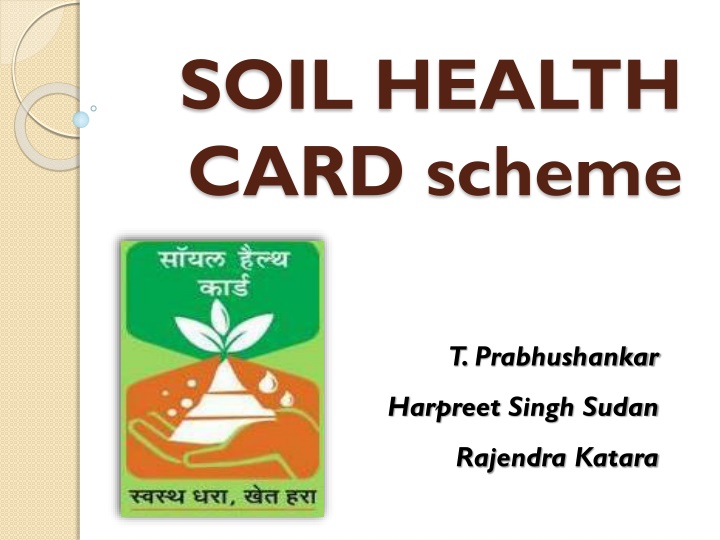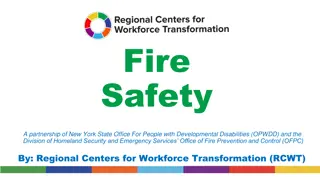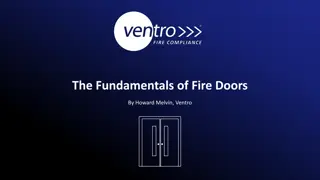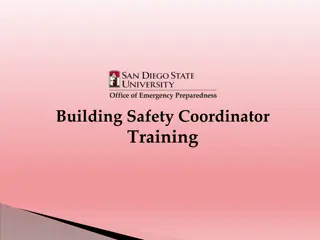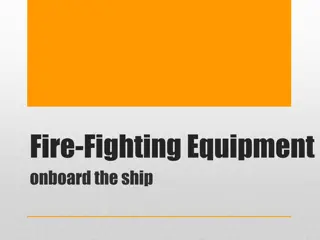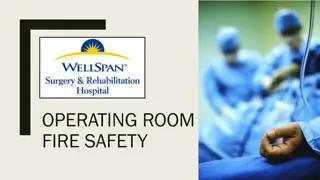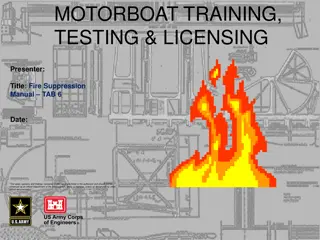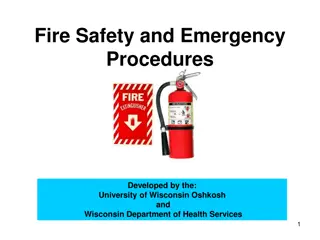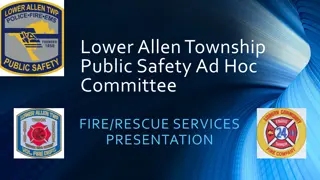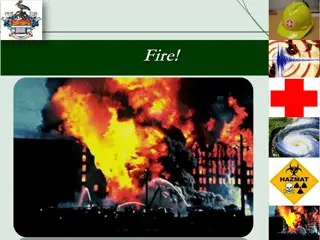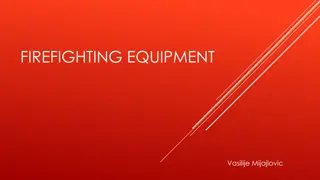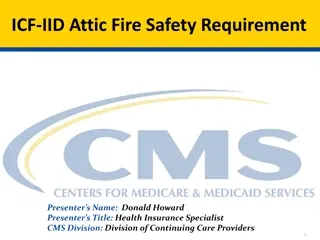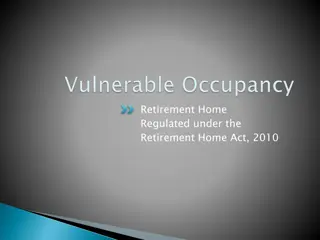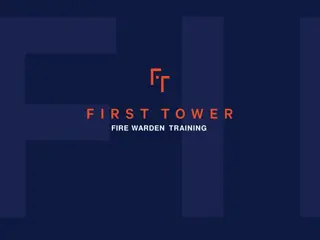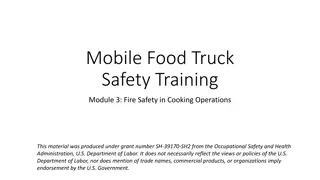Fire Safety Awareness Week
The purpose of Fire Safety Week is to raise awareness of the roles and responsibilities of Personnel In Controls in managing fire safety on-site. This includes conducting annual reviews of the Operational Fire Risk Assessment and addressing issues such as electrical sources of ignition, smoking, arson prevention, housekeeping, means of escape, and general fire safety management requirements. Emphasizing the importance of fire safety protocols and compliance ensures the safety of employees and visitors on the premises.
Download Presentation

Please find below an Image/Link to download the presentation.
The content on the website is provided AS IS for your information and personal use only. It may not be sold, licensed, or shared on other websites without obtaining consent from the author.If you encounter any issues during the download, it is possible that the publisher has removed the file from their server.
You are allowed to download the files provided on this website for personal or commercial use, subject to the condition that they are used lawfully. All files are the property of their respective owners.
The content on the website is provided AS IS for your information and personal use only. It may not be sold, licensed, or shared on other websites without obtaining consent from the author.
E N D
Presentation Transcript
SOIL HEALTH CARD scheme T. Prabhushankar Harpreet Singh Sudan Rajendra Katara
I. Salient features Site specific nutrient management Beneficiaries 14 crore farmers, 3 years cycle Soil samples 2.53 cr in first 2 years Grids - 2.5 ha (Irrigated) / 10 ha (Rainfed) Parameters 12 (pH, EC, OC, N, P, K, S, Zn, B, Fe, Mn, Cu) Cost as per guidelines- Rs. 190/sample STAGES Management Information System (MIS) Distribution of Soil Health Card Soil Sample Collection Sample Analysis 2
II Common Challenges a) Sample Collection Shortage of trained manpower Non Availability / Use of GPS devices Regional variations in sample collection window period b) Sample Analysis Inadequate number of Soil Testing Labs Soil Testing Labs without micronutrient facility Lack of skilled manpower Low cost Technology by ICAR in short supply Mridaparikshak , PUSA Soil Testing and Fertilizer Recommendation meter 3
II Common Challenges (contd..) c) Management Information System Legacy Data Migration issues Compatibility issues between Central & State portals Non availability in all local languages (currently 12) d) Administrative Non release of matching contribution from States Disparities in States preparedness & capabilities Low priority scheme for the District Administration Lack of inter-departmental coordination 4
III. Field visits a) Observations Lack of clarity in plot/ field identification (Har) Choosing the beneficiary - Owner or Cultivator (Har) Injudicious work allocation among departments (Ker) Underutilized KVKs & Equipments (Raj, MP) Lack of Power backup, Chemical Reagents (UP) Minimal follow up after distribution of Card (Guj) 5
III. Field visits b) Feedback Linkages with Agricultural inputs Flexibility in component wise expenditure Region-wise Soil deficiency guidelines Farmer s training - Sample collection - Using Soil Health Card MIS - Excessive data capture at input - Non inclusion of Local crop varieties Avoid SC / ST sub-plan wise grant allocation Increase fund flow from the Centre 6
IV. Best practices a) Sample collection Coordination among Staff & Departments (TN, Guj) Plot wise sample collection (Guj) Accurate Geo-tagging of samples (AP) Involvement of Farmers ( Raj) b) Soil Analysis Outsourcing (Guj) Operations & Maintenance of Soil Test Labs, Agricultural Produce Marketing Committees, Science Colleges Soil Test Labs Strengthening through new Labs ( Raj, MP) Double shifts, Junior Research Fellows ( TN, AP) 7
IV . Best practices (contd..) c) MIS Data entry Centralized, Quality Monitoring (Guj) Crop Stage wise fertilizer recommendations (Mah) Linkages with State farmers portal & Best practices d) Distribution Panchayat level distribution (AP, Mah) Laminated Soil Health Cards( AP) SMS & IEC Linkages(AP) 8
V. Recommendations a) Short term State wide Mission mode Sample Collection Involving students/ NCC/ NSS volunteers for collection Activation of District Level Executive Committees ICAR to validate commercially available low cost technology GIS mapping of Soil Testing Labs for effective monitoring MIS Comprehensive with linkages to Farmers portal 9
V. Recommendations b) Long term Convergence with MGNREGS - Soil Collection Convergence with Skill India Mission Trained Youth as Technical Agents, Credit based Subsidy for low cost Soil Test Labs Linkages with Agriculture Extension activities Comprehensive Follow up Farm demonstrations & handholding Impact Assessment Behavioural Changes, Input Cost of Fertilizers 10
THANK YOU THANK YOU 11
